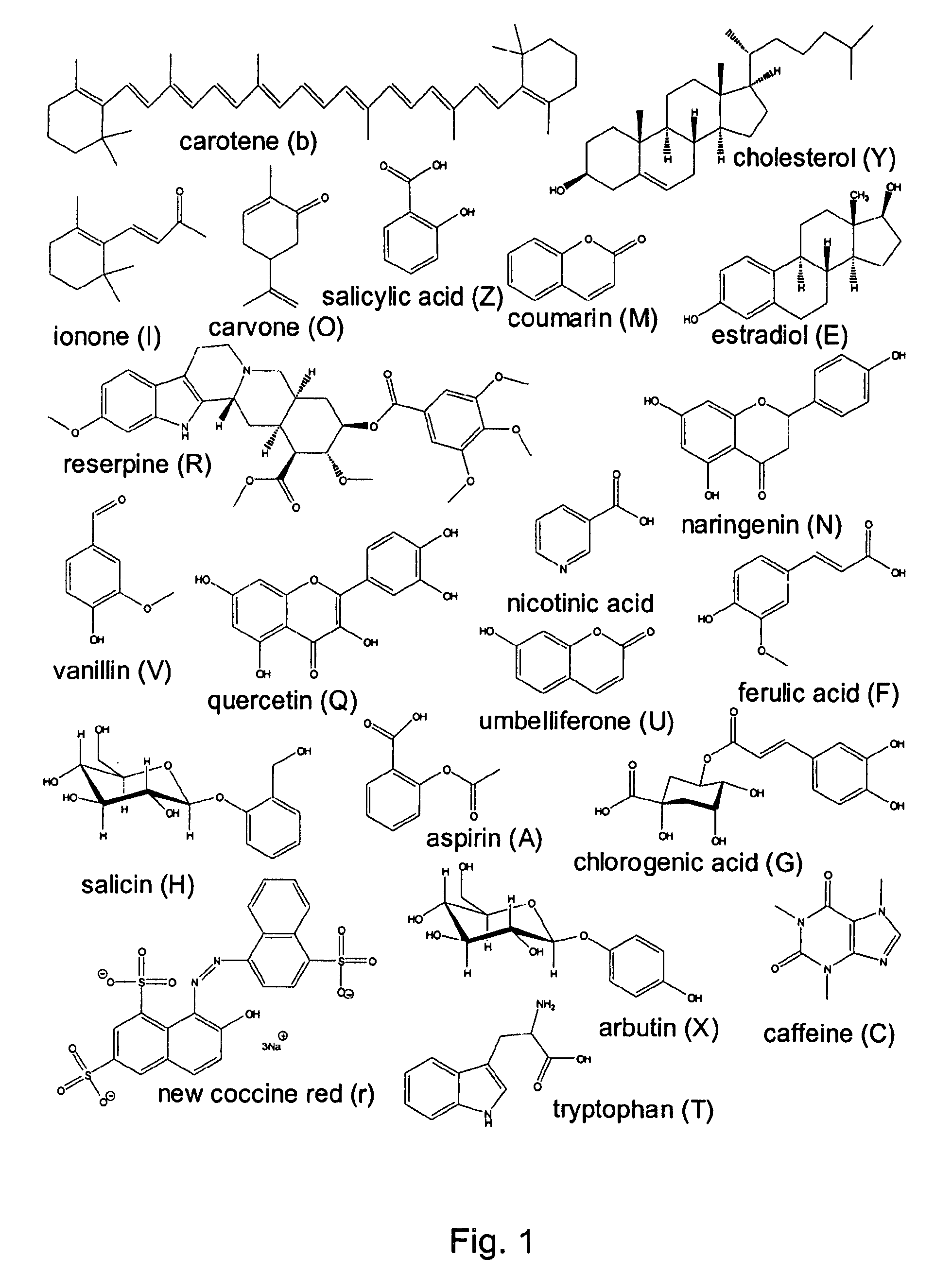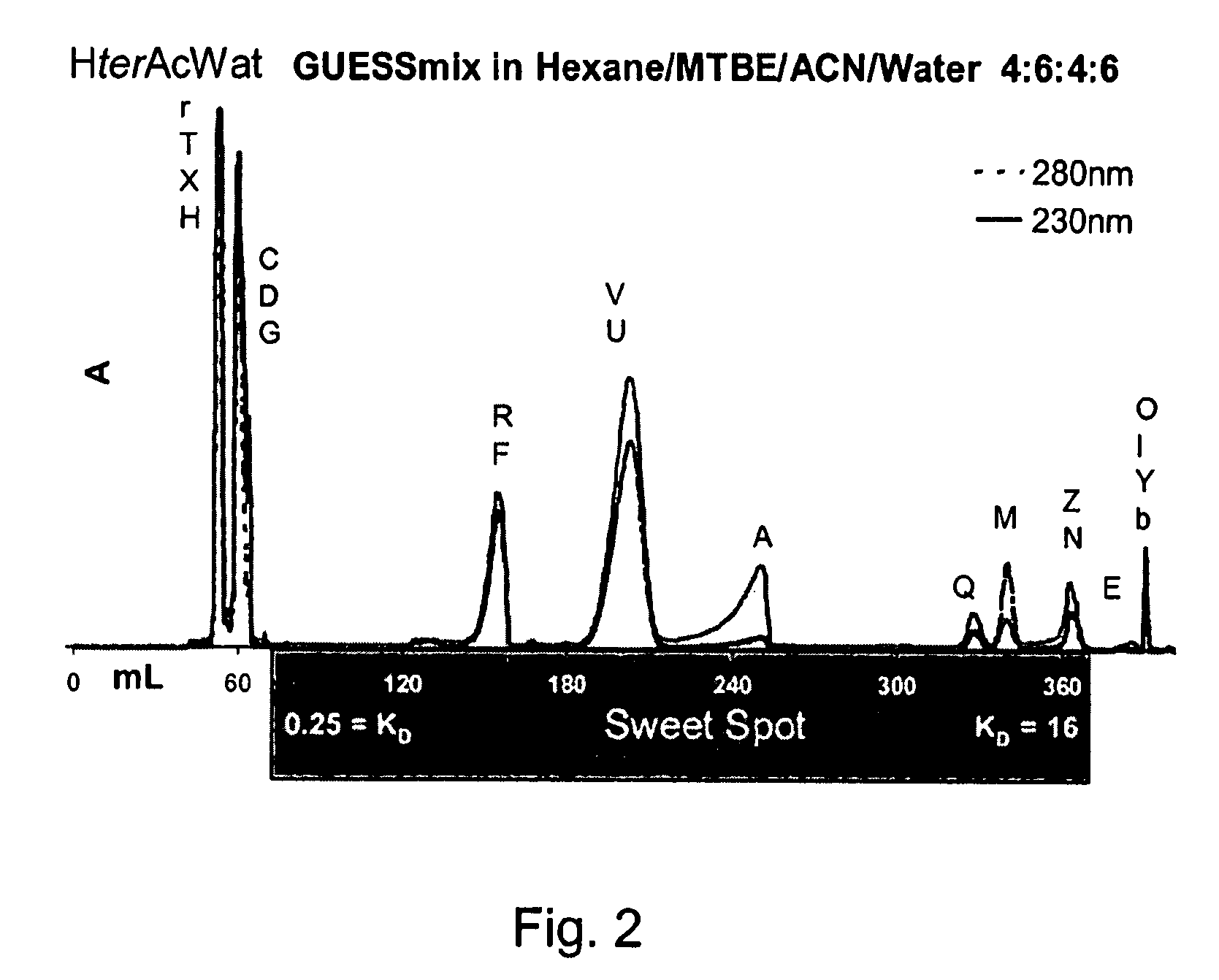Selection and rational development of solvent systems in counter-current chromatograph
a technology of counter-current chromatograph and solvent system, applied in the direction of instruments, scientific instruments, measurement devices, etc., can solve the problems of significant challenge in the selection of ccc solvent system, lack of clear method, major drawback of ccc separation, etc., and achieve the effect of improving separation
- Summary
- Abstract
- Description
- Claims
- Application Information
AI Technical Summary
Problems solved by technology
Method used
Image
Examples
Embodiment Construction
[0028]Countercurrent chromatography (CCC) is a separation technique that distributes analytes between two immiscible liquid phases in order to effectuate their separation. The term CCC is used broadly herein to refer to countercurrent separation methods including [high-speed] countercurrent chromatography ([HS]CCC) and [centrifugal]partition chromatography ([C]PC). The absence of a liquid / solid or gas / liquid interface allows for the maximizing of surface interactions between the two chromatographic phases through continuous mixing and settling. For this reason, CCC is a high-resolution separation technique, capable of fractionating complex mixtures under very mild conditions, and only based on their relative solubility in the two immiscible phases. CCC has the added advantage that it can be reproducibly scaled up by simply increasing the size of the column.4
[0029]Due to the exclusive involvement of liquids (solvents), it is widely accepted that CCC permits the complete recovery of ...
PUM
| Property | Measurement | Unit |
|---|---|---|
| flow rate | aaaaa | aaaaa |
| retention volume ratio | aaaaa | aaaaa |
| retention volume ratio | aaaaa | aaaaa |
Abstract
Description
Claims
Application Information
 Login to View More
Login to View More - R&D
- Intellectual Property
- Life Sciences
- Materials
- Tech Scout
- Unparalleled Data Quality
- Higher Quality Content
- 60% Fewer Hallucinations
Browse by: Latest US Patents, China's latest patents, Technical Efficacy Thesaurus, Application Domain, Technology Topic, Popular Technical Reports.
© 2025 PatSnap. All rights reserved.Legal|Privacy policy|Modern Slavery Act Transparency Statement|Sitemap|About US| Contact US: help@patsnap.com



